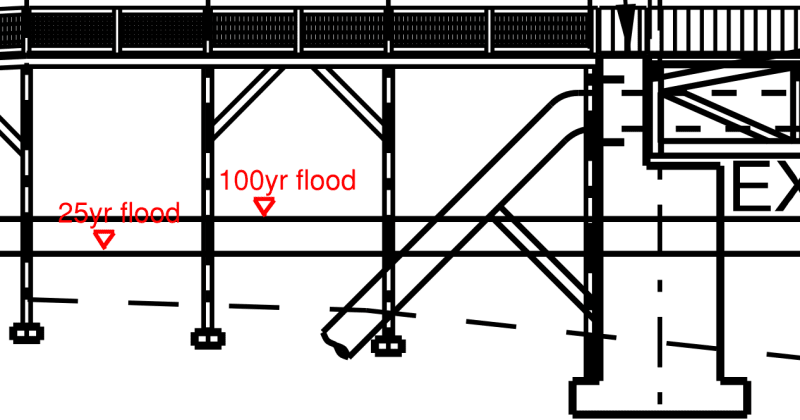Thanks guys. @LittleInch I'm not worried about deleterious VIV since the forcing frequency due to the river velocity is much lower than the natural frequency of my pipe. I guess what I am wondering is if the pipe will still experience some vortex shedding loads even though the forcing frequency is significantly lower than the natural frequency of the pipe between the supports. I am thinking that the forces perpendicular to the river velocity force (Fa) will be somewhere between 0.7*Fa to 1.0*Fa for the following reasons:
1. Kellogg (on page 259) says the magnitude of the forces (in a wind load situation) acting at right angles to the direction of flow will be "essentially equal to the dynamic pressure acting on the projected area of the cylinder". This is of course for a non-resonant condition.
2. API RP 2A-WSD R2020 says in Section B.5.3.1.2.13 that "In the absence of dynamic excitation, the maximum local lift force amplitude FL,max per unit length of the member is related to Umax, the maximum value of U [velocity] during the wave cycle, by the equation: FL,max = Clmax*(w/2g)*D*(Umax)^2" where it goes on to explain that the coefficient Clmax is approximately 0.70*Cd for both smooth and rough cylinders.
I am already considering impact loads, and there is no way to avoid this design situation. Like it or not the pipe must be designed for this situation. (Little more info, it is the portion of a force main pipe at a 45 degree angle turning down into the ground from a bridge abutment. It has a 20ft unsupported length in this angled section, and part of it passes through a flood zone.)

![[sadeyes] [sadeyes] [sadeyes]](/data/assets/smilies/sadeyes.gif) And this was at wind speeds about ~20% of design speeds. (At higher and lower wind speeds they were fine).
And this was at wind speeds about ~20% of design speeds. (At higher and lower wind speeds they were fine).